Upvote
0
-
After 15+ years, we've made a big change: Android Forums is now Early Bird Club. Learn more here.
You are using an out of date browser. It may not display this or other websites correctly.
You should upgrade or use an alternative browser.
You should upgrade or use an alternative browser.
Updated
Filters
Show only:
Upvote
0
Upvote
0
The Learning Curve, Part 1: Why Teaching AI New Languages Begins With Data
- By Samsung
- Breaking News
- 0 Replies

As Samsung continues to pioneer premium mobile AI experiences, we visit Samsung Research centers around the world to learn how Galaxy AI is enabling more users to maximize their potential. Galaxy AI now supports 16 languages, so more people can expand their language capabilities, even when offline, thanks to on-device translation in features such as Live Translate, Interpreter, Note Assist and Browsing Assist. But what does AI language development involve? This series examines the challenges of working with mobile AI and how we overcame them. First up, we head to Indonesia to learn where one begins teaching AI to speak a new language.

The first step is establishing targets, according to the team at Samsung R&D Institute Indonesia (SRIN). “Great AI begins with good quality and relevant data. Each language demands a different way to process this, so we dive deep to understand the linguistic needs and the unique conditions of our country,” says Junaidillah Fadlil, Head of AI at SRIN, whose team recently added Bahasa Indonesia (Indonesian language) support to Galaxy AI. “Local language development has to be led by insight and science, so every process for adding languages to Galaxy AI starts with us planning what information we need and can legally and ethically obtain.”
Galaxy AI features such as Live Translate perform three core processes: automatic speech recognition (ASR), neural machine translation (NMT) and text-to-speech (TTS). Each process needs a distinct set of information.

ASR, for instance, needs extensive recordings of speech in numerous environments, each paired with an accurate text transcription. Varying background noise levels help account for different environments. “It’s not enough just to add noises to recordings,” explains Muchlisin Adi Saputra, the team’s ASR lead. “In addition to the language data we obtained from authorized third-party partners, we must go out into coffee shops or working environments to record our own voices. This allows us to authentically capture unique sounds from real life, like people calling out or the clattering of keyboards.”

The ever-changing nature of languages must also be considered. Saputra adds, “We need to keep up to date with the latest slang and how it is used, and mostly we find it on social media!”
Next, NMT requires translation training data. “Translating Bahasa Indonesia is challenging,” says Muhamad Faisal, the team’s NMT lead. “Its extensive use of contextual and implicit meanings relies on social and situational cues, so we need numerous translated texts that the AI could reference for new words, foreign words, proper nouns and idioms – any information that helps AI understand the context and rules of communication.”

TTS then requires recordings that cover a range of voices and tones, with additional context on how parts of words sound in different circumstances. “Good voice recordings could do half the job and cover all the required phonemes (units of sound in speech) for the AI model,” adds Harits Abdurrohman, TTS lead. “If a voice actor did a great job in the earlier phase, the focus shifts to refining the AI model to clearly pronounce specific words.”

Stronger Together
It takes vast resources to plan for much data, and SRIN worked closely with linguistics experts. “This challenge requires creativity, resourcefulness and expertise in both Bahasa Indonesia and machine learning,” Fadlil reflects. “Samsung’s philosophy of open collaboration played a big part in getting the job done, as did our scale of operations and history of AI development.”
Working with other Samsung Research centers around the world, the SRIN team was able to quickly adopt best practices and overcome the complexities of establishing data targets. Furthermore, collaboration was good for advancing not only technology but also culture. When the SRIN team joined their counterparts in Bangalore, India, they observed the local fasting customs, creating deeper connections and expanding their understanding of different cultures.

For the team, Galaxy AI’s language expansion project took on a new significance. “We are particularly proud of our achievements here as this was our first AI project, and it won’t be our last as we continue to refine our models and improve the quality of output,” Fadlil concludes. “This expansion not only reflects our values of openness but also respects and incorporates our cultural identities through language.”

In the next episode of The Learning Curve, we will head to Samsung R&D Institute Jordan to speak to the team who led Galaxy AI’s Arabic language project. Tune in to learn about the complexities of building and training an AI model for a language with diverse dialects.
Source: Samsung
The New Samsung AI TV: Bringing the Future Home
- By Samsung
- Breaking News
- 0 Replies
What if technology could make an everyday moment richer, more connected and more lifelike? Samsung’s latest AI TV strives to enhance the viewing experience and integrate advanced technology into people’s lives so seamlessly that they barely notice.

▲ The 8K NQ8 AI Gen3 Processor combines AI sound, AI picture and AI optimization features for a frictionless viewing experience.
Samsung’s AI TV, 2024 Neo QLED 8K QN900D, is equipped with the 8K NQ8 AI Gen3 Processor, the company’s most powerful processor to date, as well as a neural processing unit (NPU) that runs twice as fast as its predecessor. Featuring eight times as many neural networks — 512 instead of 64 — the new AI TV analyzes and optimizes content in real time, delivering superior picture and sound quality and elevating the TV experience to one that places viewers at the center.
Watching a tennis match with the Samsung AI TV is like getting courtside seats. Every serve and every volley come to life right in the living room.

This immersive experience is possible thanks to 8K AI Upscaling Pro and AI Motion Enhancer Pro which work together to deliver exceptional clarity by sharpening low-resolution content and minimizing ball distortion and blurring.

▲ AI Motion Enhancer Pro uses deep learning to show the precise movements of a soccer ball during a match.
Lifelike audio is equally important — and with AI guiding the experience, dialogue is crystal clear even in loud surroundings. Active Voice Amplifier Pro distinguishes between voices and background noise, cutting through the commotion so viewers hear only what’s important.

▲ Active Voice Amplifier Pro ensures that dialogue is clear and audible.
When watching a movie with Object Tracking Sound (OTS) Pro, viewers are no longer spectators — they’re in the character’s shoes, hearing everything from all directions.

▲ OTS Pro puts viewers in the scene so they hear what the characters hear.
With AI Optimization, viewers can sit back and relax. This feature automatically fine-tunes the TV’s settings for the best viewing experience. Likewise, gamers don’t have to worry about adjusting the picture or sound with AI Auto Game Mode, which recognizes game titles and genres and automatically optimizes settings for an upgraded experience.

▲ AI Auto Game Mode allows users to focus on their gameplay.
AI Energy Mode conserves energy by using sensors to analyze ambient lighting before automatically adjusting the AI TV screen’s brightness. Similarly, the TV’s processor can identify on-screen motion and alter screen brightness. This feature represents a step toward greater sustainability.

▲ In AI Energy Mode, the screen brightness self-adjusts based on the surrounding lighting.
Meanwhile, Samsung Tizen OS turns the AI TV into more than an entertainment center. A personal curator, the operating system tailors content to users’ preferences while protecting their privacy with Samsung Knox.

▲ Samsung Tizen OS transforms the AI TV into a personal entertainment center.
At its best, technology that enriches lives sits in the background — present, but not intrusive. Samsung’s AI TV continues to evolve to do just that by pushing the frontier of audio and visual experiences, personalized experiences and enhanced sustainability while putting AI to work under the hood.

▲ The 8K NQ8 AI Gen3 Processor combines AI sound, AI picture and AI optimization features for a frictionless viewing experience.
Samsung’s AI TV, 2024 Neo QLED 8K QN900D, is equipped with the 8K NQ8 AI Gen3 Processor, the company’s most powerful processor to date, as well as a neural processing unit (NPU) that runs twice as fast as its predecessor. Featuring eight times as many neural networks — 512 instead of 64 — the new AI TV analyzes and optimizes content in real time, delivering superior picture and sound quality and elevating the TV experience to one that places viewers at the center.
Full Immersion With AI Picture Technology
Watching a tennis match with the Samsung AI TV is like getting courtside seats. Every serve and every volley come to life right in the living room.

This immersive experience is possible thanks to 8K AI Upscaling Pro and AI Motion Enhancer Pro which work together to deliver exceptional clarity by sharpening low-resolution content and minimizing ball distortion and blurring.

▲ AI Motion Enhancer Pro uses deep learning to show the precise movements of a soccer ball during a match.
Revolutionizing Audio
Lifelike audio is equally important — and with AI guiding the experience, dialogue is crystal clear even in loud surroundings. Active Voice Amplifier Pro distinguishes between voices and background noise, cutting through the commotion so viewers hear only what’s important.

▲ Active Voice Amplifier Pro ensures that dialogue is clear and audible.
When watching a movie with Object Tracking Sound (OTS) Pro, viewers are no longer spectators — they’re in the character’s shoes, hearing everything from all directions.

▲ OTS Pro puts viewers in the scene so they hear what the characters hear.
Effortless Fine-Tuning
With AI Optimization, viewers can sit back and relax. This feature automatically fine-tunes the TV’s settings for the best viewing experience. Likewise, gamers don’t have to worry about adjusting the picture or sound with AI Auto Game Mode, which recognizes game titles and genres and automatically optimizes settings for an upgraded experience.

▲ AI Auto Game Mode allows users to focus on their gameplay.
AI Energy Mode conserves energy by using sensors to analyze ambient lighting before automatically adjusting the AI TV screen’s brightness. Similarly, the TV’s processor can identify on-screen motion and alter screen brightness. This feature represents a step toward greater sustainability.

▲ In AI Energy Mode, the screen brightness self-adjusts based on the surrounding lighting.
Meanwhile, Samsung Tizen OS turns the AI TV into more than an entertainment center. A personal curator, the operating system tailors content to users’ preferences while protecting their privacy with Samsung Knox.

▲ Samsung Tizen OS transforms the AI TV into a personal entertainment center.
At its best, technology that enriches lives sits in the background — present, but not intrusive. Samsung’s AI TV continues to evolve to do just that by pushing the frontier of audio and visual experiences, personalized experiences and enhanced sustainability while putting AI to work under the hood.
Source: Samsung
Fallout, the Amazon Prime TV series 2024
its only a guess. they are slated to start filming this September so hopefully they can wrap season 2 up quickly. who knows exactly how long it will take......my guess would be a late 2025 release.......maybe october or august of next year would be my guess.I bet they rush that release. If it is gaining a following, they will not want to lose it.
Upvote
0
Local Double A Baseball
That is a fact!Exactly.
My childhood was the same.
Sad that the world has changed so much.
Upvote
0
LG Strengthens Advanced Materials Business With Launch of Antimicrobial Glass Powder
- By LG
- Breaking News
- 0 Replies
Company Launches an Innovative New Material PuroTec to Bolster Growth
and Global Presence in B2B Sector
and Global Presence in B2B Sector
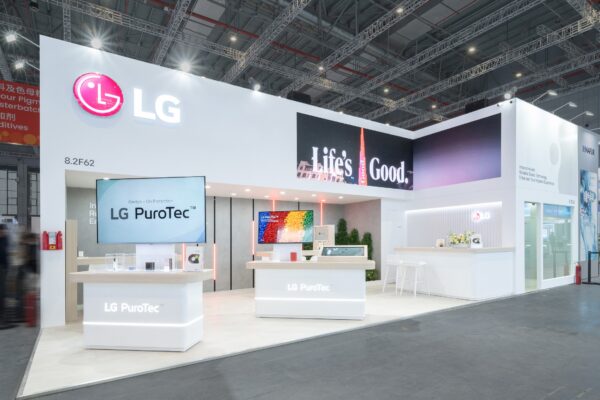
SEOUL, May 10, 2024 — LG Electronics (LG) is accelerating the growth of its advanced materials business with the launch of LG PuroTecTM, a cutting-edge antimicrobial glass powder. Designed to safeguard product hygiene and suitable for diverse applications, this innovative material leverages the company’s proprietary glass composition design technology and thorough understanding of real-life home appliance usage environments.
PuroTec, a portmanteau of the words Pure, Protect and Technology, possesses anti-fungal and antibacterial properties that prevent microorganism contamination and associated odors. LG’s glass powder can be incorporated into various materials, including plastics, paint and rubber. Additionally, the company’s antimicrobial glass powder provides chemical and thermal stability, as well as durability and resistance to discoloration.
LG first began developing antimicrobial glass powder in 1996, and now holds an impressive 219 patents related to the production and application of glass powder. The company manufactures its antimicrobial glass powder at LG Smart Park in Changwon, South Korea, which has an annual production capacity of 4,500 tons. This year, the company is expanding sales of its antimicrobial glass powder to major markets in Asia, such as China, Vietnam and India, and is anticipating a year-on-year increase in sales of over 700 percent.
Moving forward, LG aims to significantly ramp up its advanced material business, utilizing international exhibitions to introduce PuroTec to potential global customers. PuroTec was recently honored at Chinaplas, Asia’s largest plastic and rubber industry exhibition, held in Shanghai, China (April 23-26), where it was awarded ‘Innovation of the Year’s status. This month, LG plans to unveil PuroTec at the National Plastics Exposition (NPE), considered one of the world’s top-three plastic industry events, which will take place in Orlando, Florida, USA, from May 6-10.
“We are dedicated to building up our advanced materials business, and are confident that it will drive new growth for our B2B business,” said Lyu Jae-cheol, president of LG Electronics Home Appliance & Air Solution Company. “LG will continue to invest in research and development to further enhance the efficacy and quality of its glass powder materials, and to uncover new cases for its application in the home appliance category and beyond.”
PuroTec, a portmanteau of the words Pure, Protect and Technology, possesses anti-fungal and antibacterial properties that prevent microorganism contamination and associated odors. LG’s glass powder can be incorporated into various materials, including plastics, paint and rubber. Additionally, the company’s antimicrobial glass powder provides chemical and thermal stability, as well as durability and resistance to discoloration.
LG first began developing antimicrobial glass powder in 1996, and now holds an impressive 219 patents related to the production and application of glass powder. The company manufactures its antimicrobial glass powder at LG Smart Park in Changwon, South Korea, which has an annual production capacity of 4,500 tons. This year, the company is expanding sales of its antimicrobial glass powder to major markets in Asia, such as China, Vietnam and India, and is anticipating a year-on-year increase in sales of over 700 percent.
Moving forward, LG aims to significantly ramp up its advanced material business, utilizing international exhibitions to introduce PuroTec to potential global customers. PuroTec was recently honored at Chinaplas, Asia’s largest plastic and rubber industry exhibition, held in Shanghai, China (April 23-26), where it was awarded ‘Innovation of the Year’s status. This month, LG plans to unveil PuroTec at the National Plastics Exposition (NPE), considered one of the world’s top-three plastic industry events, which will take place in Orlando, Florida, USA, from May 6-10.
“We are dedicated to building up our advanced materials business, and are confident that it will drive new growth for our B2B business,” said Lyu Jae-cheol, president of LG Electronics Home Appliance & Air Solution Company. “LG will continue to invest in research and development to further enhance the efficacy and quality of its glass powder materials, and to uncover new cases for its application in the home appliance category and beyond.”
# # #
Source: LG
Heart Trauma Recovery
- By olbriar
- Fitness & Health
- 97 Replies
I have no pain associated with the kidneys or my urinary track. I'm hoping that there is nothing wrong. I wouldn't have known my kidneys were having a problem if not for the blood work I had done. I think the numbers were bad because I was so badly dehydrated. We shall see.
Upvote
0
What's the weather like where you are?
I hope anyone that has to deal with that weather stays safe, stay in the house ...... it's not worth it.
Funny how the weather is acting now and the new Twisters movie is coming out
Upvote
0
Learn how Amazon’s award-winning Hey Disney! voice assistant works
- By Amazon
- Breaking News
- 0 Replies
First-of-its-kind collaboration brings the best of Disney, Pixar, and 'Star Wars' characters to your home and Disney Resort hotel rooms with the help of Amazon’s Alexa.
Source: Amazon
Source: Amazon
Random Thought Thread
- Off Topic
- 27448 Replies
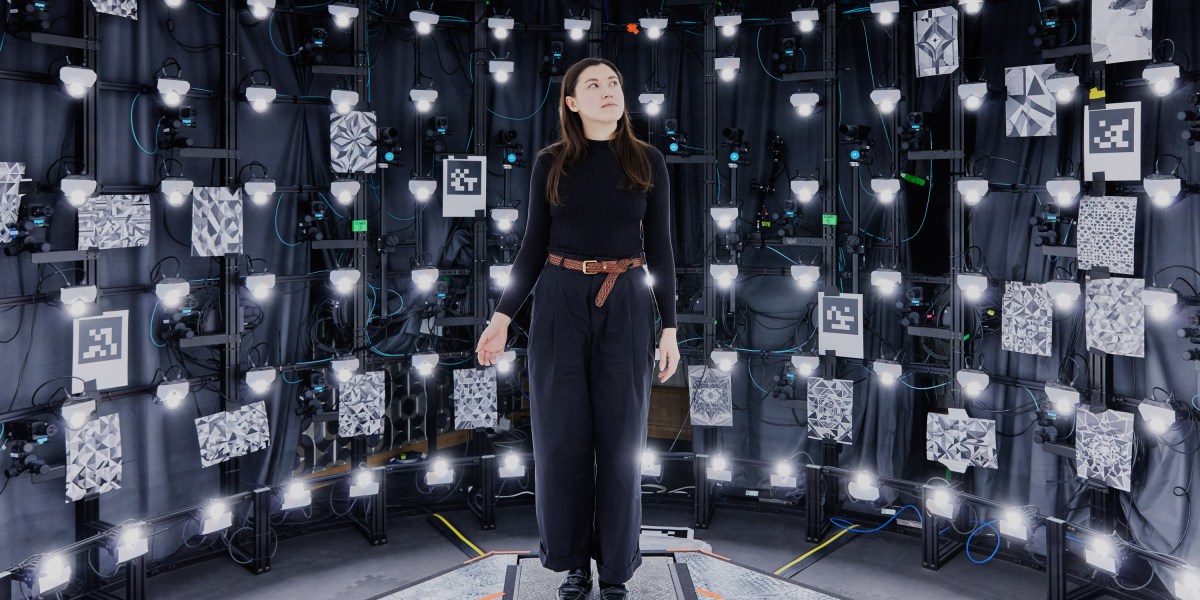
An AI startup made a hyperrealistic deepfake of me that’s so good it’s scary
Synthesia's new technology is impressive but raises big questions about a world where we increasingly can’t tell what’s real.
Upvote
0
The (Official?) “I’m Married” Thread
- By Unforgiven
- Funny / Meme
- 264 Replies
Upvote
0
Last post wins!
- By Davdi
- Forum Games
- 52178 Replies
Upvote
0
Fatalities 2024
- Off Topic
- 75 Replies
Steve Albini - Wikipedia Steve Albini whose incredible musical talents were just far and wide, may his talents be with his fans and family rest in peace.
Upvote
0
Caturday
- Funny / Meme
- 2361 Replies
Upvote
0
[APP] Discover Uniqueness Color Phone: Call Screen Theme
- By heehe
- Apps & Games
- 8 Replies
Customize creative call screen themes
Design your call screen to be special
Simple and easy to use screen call theme

Design your call screen to be special
Simple and easy to use screen call theme
Upvote
0
hello from Bunghole
- By ocnbrze
- Introductions
- 27 Replies
ok so looks like bunghole escaped and made an appearance on SNL:
and he also snuck out to make it for the Fall Guy premiere:
i caught him and locked him back up.....sorry guys. i need to hire someone to watch him......LOL
and he also snuck out to make it for the Fall Guy premiere:
i caught him and locked him back up.....sorry guys. i need to hire someone to watch him......LOL
Upvote
0
[Executive Corner] Orchestrating “Affectionate Intelligence” With AI Processors Exclusive to LG OLED
- By LG
- Breaking News
- 0 Replies
Imagine a TV that not only delivers your favorite shows in incredible picture quality but also connects with you on a deeper level. That concept is no longer bound to imagination, as LG’s latest TVs are capable of understanding what you want and need, tailoring every moment you spend with it through ‘Affectionate Intelligence.’ This is the essence of LG’s unwavering commitment to crafting empathetic algorithms through three decades of technological innovation. This ethos seamlessly extends to the development of its AI chipsets, which are designed to foster more meaningful TV interactions.
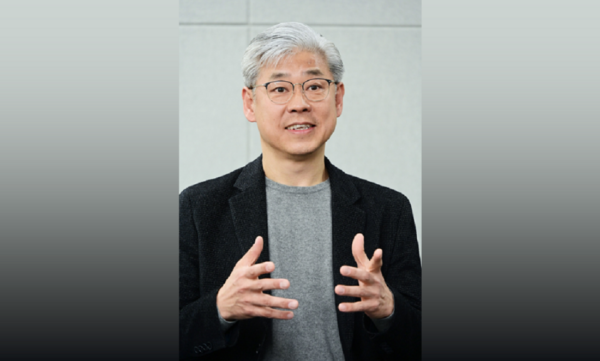
As a testament to this dedication, LG’s Alpha AI processor, engineered exclusively for its OLED TVs, made its global debut a decade ago as one of the biggest breakthroughs in TV processing technology history. This AI-powered processor is constantly evolving based on customer feedback, which guarantees a TV experience that only gets better with time.
Amidst the widespread adoption of OLED panels, LG OLED TVs set themselves apart courtesy of the first OLED-dedicated AI processor. This processor leverages advanced algorithms and cutting-edge upscaling technology to unlock uncharted levels of picture quality within LG OLED TVs.
Amidst the widespread adoption of OLED panels, LG OLED TVs set themselves apart courtesy of the first OLED-dedicated AI processor. This processor leverages advanced algorithms and cutting-edge upscaling technology to unlock uncharted levels of picture quality within LG OLED TVs.
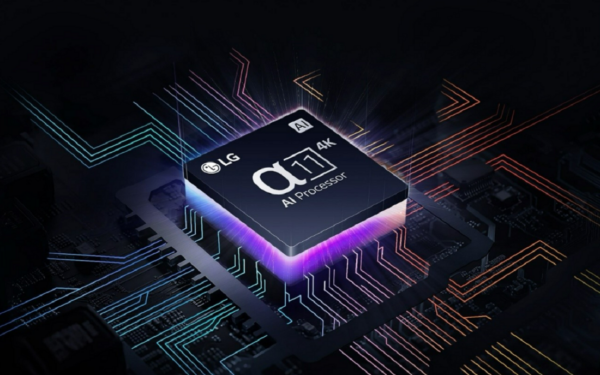
Various processing technologies continue to evolve with AI, notably showcasing significant performance enhancements in the Neural Processing Unit (NPU) – essential for affectionate intelligence – with a remarkable surge of 400 percent. LG’s latest OLED evo TVs1 are equipped with the new α (Alpha) 11 AI processor which boosts processing speeds by 30 percent compared to its predecessor.
What’s more, LG’s premium AI processing technology has expanded to LG QNED TVs, taking the performance of its high-end LCD TV lineup to new levels. LG QNED TVs feature the Alpha 8 AI processor to achieve a 1.3-fold increase in AI performance and 1.6-fold increase in processing speed compared to its predecessor. These remarkable advancements come together to form a powerful yet refined audiovisual experience that heightens the audience’s sense of immersion.
At the core of LG’s AI TVs lies a deep understanding of the user’s preferences, habits and desires. Seeking to enrich the home entertainment experience with versatile personalization and added convenience, the latest LG AI TVs can recognize voices based on unique webOS profiles, making it easier to deliver personalized recommendations based on their personal viewing history.
What’s more, LG’s premium AI processing technology has expanded to LG QNED TVs, taking the performance of its high-end LCD TV lineup to new levels. LG QNED TVs feature the Alpha 8 AI processor to achieve a 1.3-fold increase in AI performance and 1.6-fold increase in processing speed compared to its predecessor. These remarkable advancements come together to form a powerful yet refined audiovisual experience that heightens the audience’s sense of immersion.
At the core of LG’s AI TVs lies a deep understanding of the user’s preferences, habits and desires. Seeking to enrich the home entertainment experience with versatile personalization and added convenience, the latest LG AI TVs can recognize voices based on unique webOS profiles, making it easier to deliver personalized recommendations based on their personal viewing history.
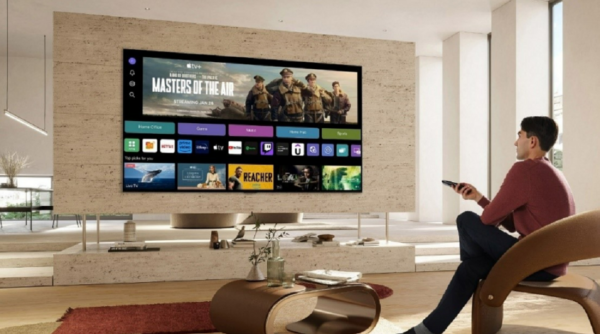
This user-centric approach lets users access their favorite or most-used content and services in an instant, while Picture Wizard works to tailor picture quality to their preferences to foster a deeper understanding and connection. Picture Wizard lets users pick from a range of image options, so that they can fine-tune images to their liking and receive greater viewing satisfaction without having to learn everything there is to know about technical aspects such as brightness, contrast or sharpness.
With sound quality now deemed just as important as image quality in completing the viewing experience, AI processing technologies have been evolving to help the TV’s audio performance catch up. AI Sound Pro offers richer and fuller audio while the LG TV’s built-in speakers produce virtual 11.1.2 surround sound to heighten immersion. The AI can even enhance dialogue clarity by separating vocals from the soundtrack, making it seem like sounds are emanating naturally from the screen’s center. Moreover, WOW Orchestra creates three-dimensional audio which works in unison with the TV’s built-in speakers and compatible LG soundbars, creating a unified sound together.
With sound quality now deemed just as important as image quality in completing the viewing experience, AI processing technologies have been evolving to help the TV’s audio performance catch up. AI Sound Pro offers richer and fuller audio while the LG TV’s built-in speakers produce virtual 11.1.2 surround sound to heighten immersion. The AI can even enhance dialogue clarity by separating vocals from the soundtrack, making it seem like sounds are emanating naturally from the screen’s center. Moreover, WOW Orchestra creates three-dimensional audio which works in unison with the TV’s built-in speakers and compatible LG soundbars, creating a unified sound together.
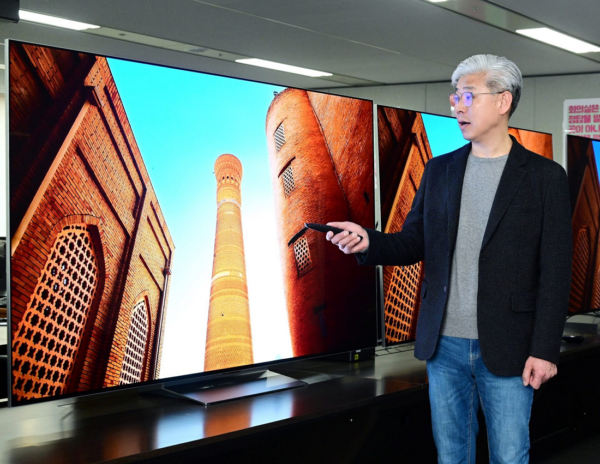
LG’s focus on the webOS smart TV platform, which powers over 200 million smart TVs, is clear for everyone to see. webOS enriches everyday life experiences with versatile personalization and enhanced convenience in the form of individual profiles, voice recognition and recommendations based on viewing history. With its extensive user base, LG is set to maintain a strong presence in targeted advertising, FAST and content streaming services.
Lastly, the webOS Re:New program2 offers the latest webOS upgrade to existing LG Smart TV owners to guarantee the most up-to-date TV experience for the next five years. That means consumers purchasing an LG OLED TV or LG QNED TV launched in 2024 can benefit from the latest webOS platform until 2028.
To explore the various efforts the LG Home Entertainment Company is making to curate life-enriching experiences for every kind of user, stay tuned to the LG Newsroom.
Lastly, the webOS Re:New program2 offers the latest webOS upgrade to existing LG Smart TV owners to guarantee the most up-to-date TV experience for the next five years. That means consumers purchasing an LG OLED TV or LG QNED TV launched in 2024 can benefit from the latest webOS platform until 2028.
To explore the various efforts the LG Home Entertainment Company is making to curate life-enriching experiences for every kind of user, stay tuned to the LG Newsroom.
By Jung Jae-chul, home entertainment research and development lab leader of HE R&D Lab at LG Electronics
# # #
1 LG OLED evo M4 and G4 models.
2 Pop-up notifications offering a full upgrade without the need to select specific UX, UI or features are only sent to customers who have agreed to receive them. Please note that this upgrade does not cover the TV’s hardware performance, features or durability.
Source: LG
What are you drinking right now?
- By olbriar
- Food and Beverage
- 767 Replies
I'm having a delightful glass of electrolyte 

Upvote
0
Hard Drive Replacement
- By The_Chief
- Laptops & Computers
- 3 Replies
Hard drive? You mean SSD. Big difference.
My desktop has a 2 TB SSD for the C: drive and programs; and a 4 TB SSD for the D: drive user data. Everything is also stored on our 16 TB Synology NAS and backed up to external drives to prevent data loss. 100% under our control.
My desktop has a 2 TB SSD for the C: drive and programs; and a 4 TB SSD for the D: drive user data. Everything is also stored on our 16 TB Synology NAS and backed up to external drives to prevent data loss. 100% under our control.
Upvote
0
The "Linux questions (and other stuff)" thread
- By Davdi
- Laptops & Computers
- 3144 Replies
I've tried xfburn as i have XFCE desktop - still no joy. I doubt K3b would be any different.
Upvote
0
Unihertz (maker of Jelly)
- By Davdi
- Other & Misc.
- 6 Replies
I bought a Unihertz TikTok E in their sale for $109 US as a temporary phone. it's fine for a cheap phone, the specs seem genuine, the camera is 48MP (verified in Camera FV5 and open camera.) Bluetooth is fine with headphones and car stereo, WiFi in the house is also OK. the only downside is poor battery life (Just about a day with heavy use, maybe 2 days very light use. The gimmick is a small round screen on the back that can be a clock, or answer calls, or some other things. I wouldn't trust it long term though.
Upvote
0
Load more
BEST TECH IN 2023
We've been tracking upcoming products and ranking the best tech since 2007. Thanks for trusting our opinion: we get rewarded through affiliate links that earn us a commission and we invite you to learn more about us.
Smartphones
Best Android Phones
See All- Google Pixel 8 Pro Check Price
- Samsung Galaxy S23 Ultra Check Price
- Samsung Galaxy Z Fold5 Check Price
- Google Pixel 8 Check Price
- Samsung Galaxy S23 Check Price
Upcoming
See All
Best iPhones
See All- Apple iPhone 15 Pro Max Check Price
- Apple iPhone 15 Pro Check Price
- Apple iPhone 15 Plus Check Price
- Apple iPhone 15 Check Price
- Apple iPhone SE (2022) Check Price
Upcoming
See AllTablets

Best Tablets
See All- Samsung Galaxy Tab S9 Ultra Check Price
- Apple iPad Pro (2022) Check Price
- Apple iPad Air (2022) Check Price
- Apple iPad Mini (2021) Check Price
- Microsoft Surface Pro 9 Check Price
Upcoming
See AllLaptops

Best Laptops
See All- Apple Macbook Pro Check Price
- Apple Macbook Air (2023) Check Price
- Dell XPS 13 Check Price
- Acer Chromebook Spin 714 Check Price
- Dell Alienware m18 (2022) Check Price
Upcoming
See AllTelevisions

Best TVs
See All- Samsung The Frame TV Check Price
- Samsung Neo QLED 4K QN90C Check Price
- LG G3 OLED Check Price
- LG A2 OLED Check Price
- ROKU Plus Series Check Price
- Samsung S90C OLED Check Price
- SunBriteTV Veranda 3 Check Price
Upcoming
See AllGame Consoles

Best Game Consoles
See All- Nintendo Switch OLED Check Price
- Microsoft XBOX Series X Check Price
- Sony Playstation 5 Check Price
- Microsoft XBOX Series S Check Price
- Nintendo Switch Lite Check Price
Upcoming
See AllWearables

Best Wearables
See All- Oura Ring 3 Check Price
- Apple Watch Series 9 Check Price
- Google Pixel Watch 2 Check Price
- Samsung Galaxy Watch 6 Classic Check Price
- Fitbit Inspire 3 Check Price
- Amazfit Amazfit Band 7 Check Price
- Apple Watch SE Check Price
- Apple Watch Ultra 2 Check Price

